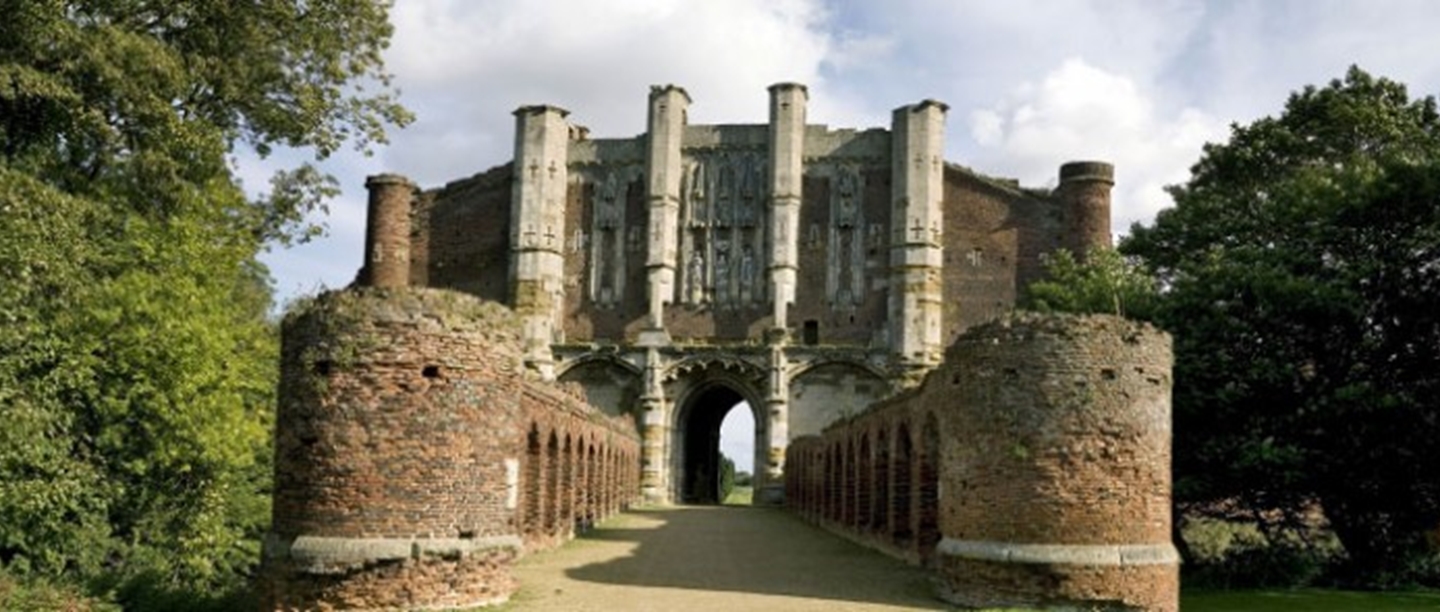
Thornton Abbey’s enormous and ornate fortified gatehouse is the largest and among the finest in England. Members’ Panellist Thomas Taylor takes us on a tour of this North Lincolnshire landmark, and tells us about the role it played in rekindling his love of English history
“When you think of Lincolnshire you think of the beautiful Wolds or the golden sands of the East Coast. But my home county has one feature that often gets overlooked: its relationship with religion. Here in the land of John Wesley, there is one building that dominates all others: the magnificent and all-powerful Thornton Abbey.
There are not many buildings in this country that are as imposing or as grand as this. Even 476 years after the end of monastic life there, it still imposes itself on the land like no other.
“Medieval craftsmanship at its best”
After entering the gatehouse and moving into the first grandiose room you begin to get a feel of what it must have been like back in the gatehouse’s heyday. The magnificent rooms reveal the power of one the richest Augustinian monasteries in medieval England, and even today the carvings and the gigantic fireplace give an indication of this wealth. As you climb up the staircase to the top you will see medieval craftsmanship at its best, with a brilliantly carved undercroft still as good as it was when it was first in place.
Stone detail at the front of the Gatehouse, above the entrance
When you exit the gatehouse and head towards the monastic precinct, you can't help but turn around and notice just how jaw dropping the building is - you'll find yourself taking photos from all angles!
“Magnificently decorated, vibrant and with beautiful carvings”
As you walk through the gate and into the nave of the church, you see the illustration of the nave as it would have looked like back at its height in the 15th century. You can only get a sense of what would've been one of the most spectacular abbeys in medieval England: magnificently decorated, vibrant with beautiful carvings and wonderful stained glass and tiled floor. Moving up to what would've been the presbytery, again you can but imagine what it would've been like: beautifully decorated and extremely holy and sacred.
The octagonal chapter house would also have been lavishly decorated. This must have been an awesome part of the building, with no central column needed to support the roof and the light shining on the abbot from all sides symbolising his power and authority over the canons.
The Chapter House
As you move through the chapter house towards the cloister you get a glimpse of the canon’s dormitory blocks. Although little survives today you can still make out where they once resided.
At the boundary of the cloister, you notice the glazed tiles dotted around the perimeter. Only when you get up close to them can you really appreciate how magnificent these would've looked back when the cloister was at its height. In my opinion, the tiles at Thornton are only matched by the more extravagant tiles at Byland Abbey.
“The monastery would never be quite the same place again”
Upon exiting the Abbey you can't help but feel for the canons and monks who, in 1539, were forced to give up a way of life that had existed for over four hundred years. Although a college was founded soon after the Abbey’s dissolution, this would only be a short-lived entity – it was dissolved by the boy king Edward VI, who’s staunch Protestantism sealed the college’s short lived fate. The monastery would never be quite the same place again.
There are many reasons why I love Thornton Abbey. Apart from the magnificent buildings, it’s the warm welcome you get from the staff, and their passion and dedication to the site that made me decide to join this great organisation.
That is why Thornton Abbey and Gatehouse is so special to me. Not only is it where I began my English Heritage journey, but where my love of English history was rekindled. To me, the Abbey of Thornton will always be the jewel in the crown of North Lincolnshire.”
View of the Gatehouse
Visit Thornton Abbey and Gatehouse
Thornton Abbey and Gatehouse, North Lincolnshire is open at weekends until 29 March, and then from Wednesday to Sunday (including bank holidays) until 30 June. Plan your visit now.
English Heritage membership gives you free access to over 400 historic properties all over the country, and free or discounted access to hundreds of events every year.